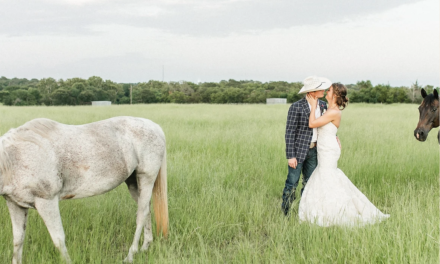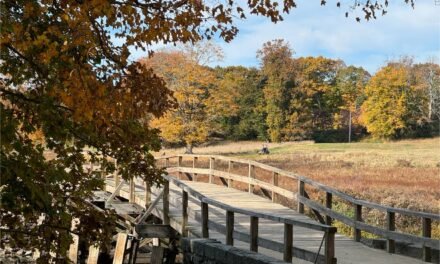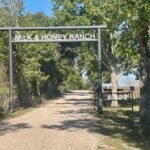
Discover a land of awe-inspiring beauty at Alaska’s Lake Clark National Park
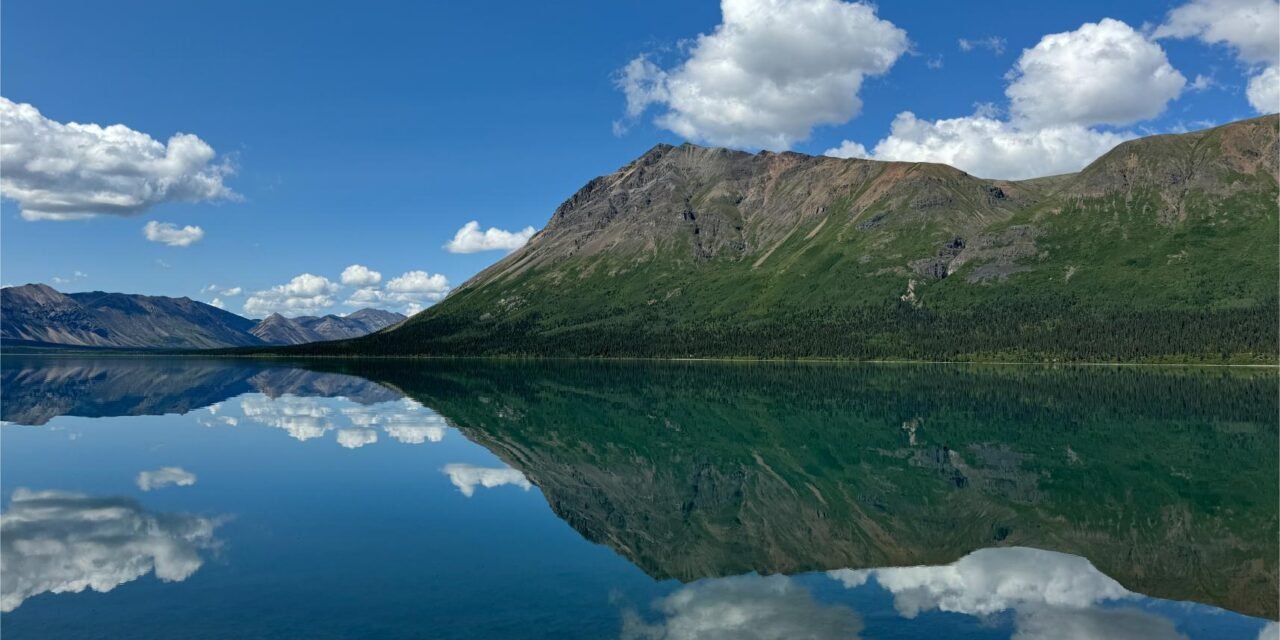
With its eight national parks, Alaska has plenty of dramatic landscapes to explore. In pursuit of visiting all 63 of our country’s national parks, I headed to the Last Frontier. Though I’d lived in the state for several years, many eons ago, I never managed to make it to Lake Clark NP due to its remote location.
Situated in Southwest Alaska, about 100 miles from Anchorage, Lake Clark is typically reached via small aircraft, as it is not connected to any road system. It takes advance planning to make the journey and deal with the logistics of getting around once you arrive.
The park boasts glaciers, jagged mountains, active volcanoes and sprawling tundra, along with numerous lakes and rivers. At four million acres (park plus preserve), it’s a vast landscape, approximately the size of the state of Hawaii. It was designated a National Park and Preserve in 1980.
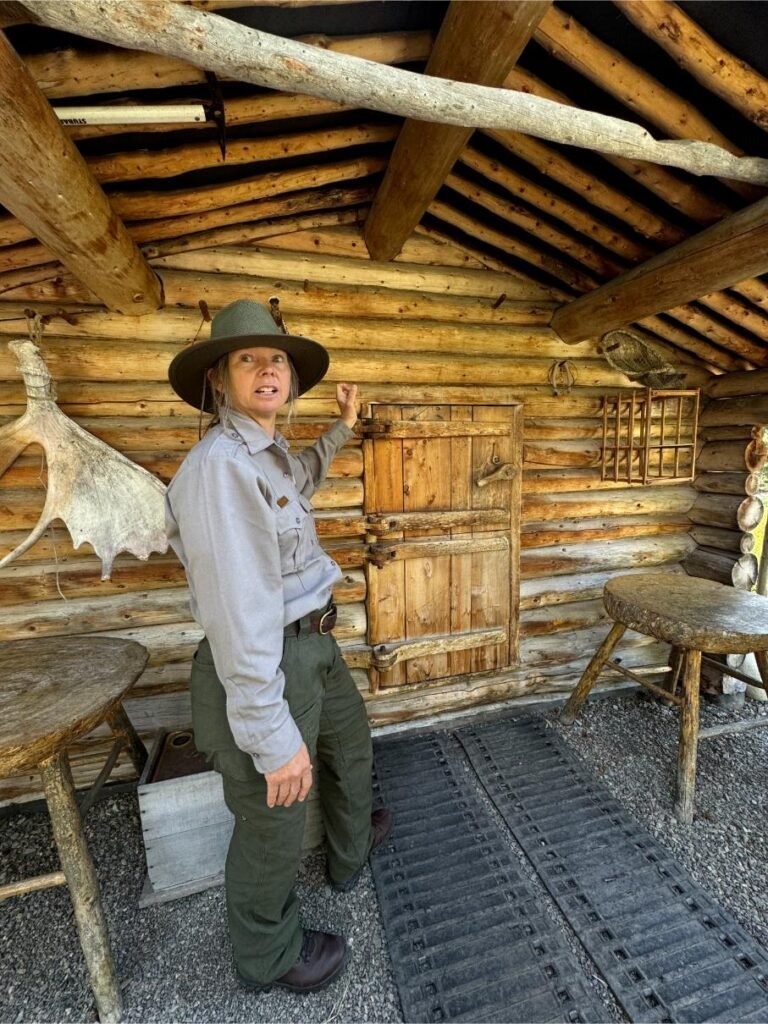
Park ranger in front of Proenneke’s cabin. Photo by Debbie Stone

Dining in the Great Room at Lake Clark Lodge. Photo by Debbie Stone
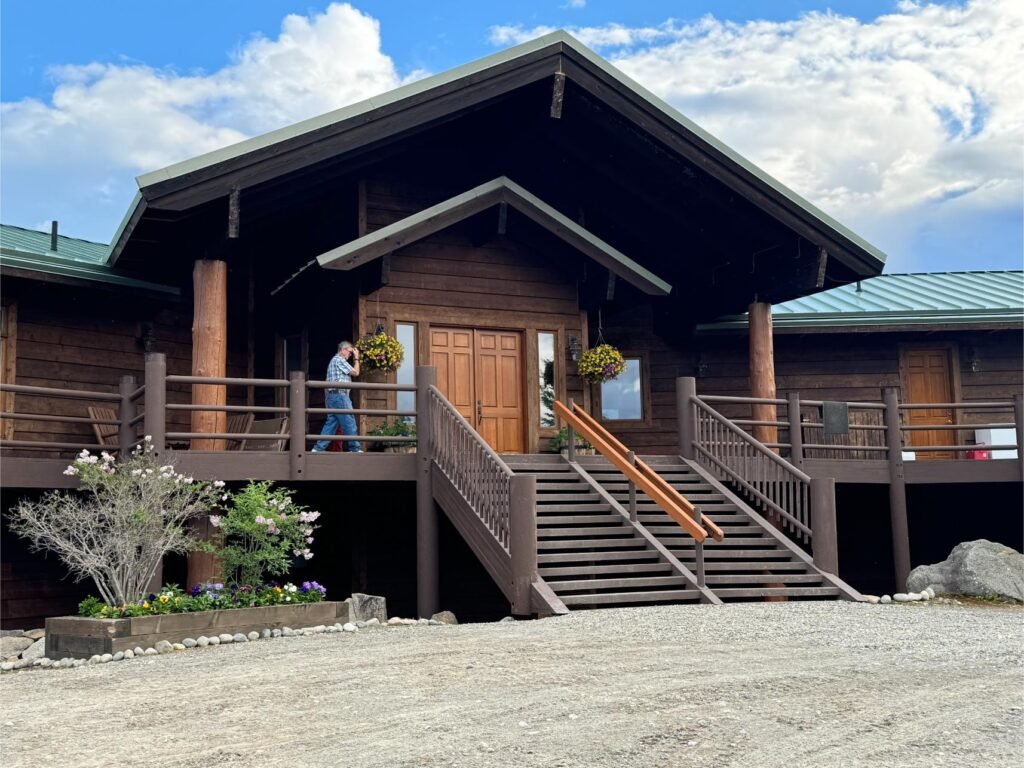
Entrance to Lake Clark Lodge. Photo by Debbie Stone
The park’s field headquarters and visitor center are located in Port Alsworth, a tiny town on the east shore of Lake Clark. The lake is a spectacular 42-mile-long turquoise body of water surrounded by rugged mountains and has a notable depth of 870 feet. Port Alsworth is the only community within Lake Clark National Park and Preserve, which makes it a major gateway for travelers seeking to experience the place.
Though you can stay in Port Alsworth, my husband and I opted to make Lake Clark Lodge home base. We wanted the authentic Alaskan lodge experience, and the sublime photos and stellar reviews of the property online convinced us this was the place.
The lodge is inside Lake Clark National Park and perched on a point overlooking a wonderland of pristine and majestic landscape. It offers a large menu of Alaska adventure activities, including fishing, bear viewing, kayaking, hiking, stand-up paddle boarding, wildlife tours, boat excursions and more. Float planes, boats and guides are at your service to whisk you away to hidden gems within this park, as well as in Katmai National Park.
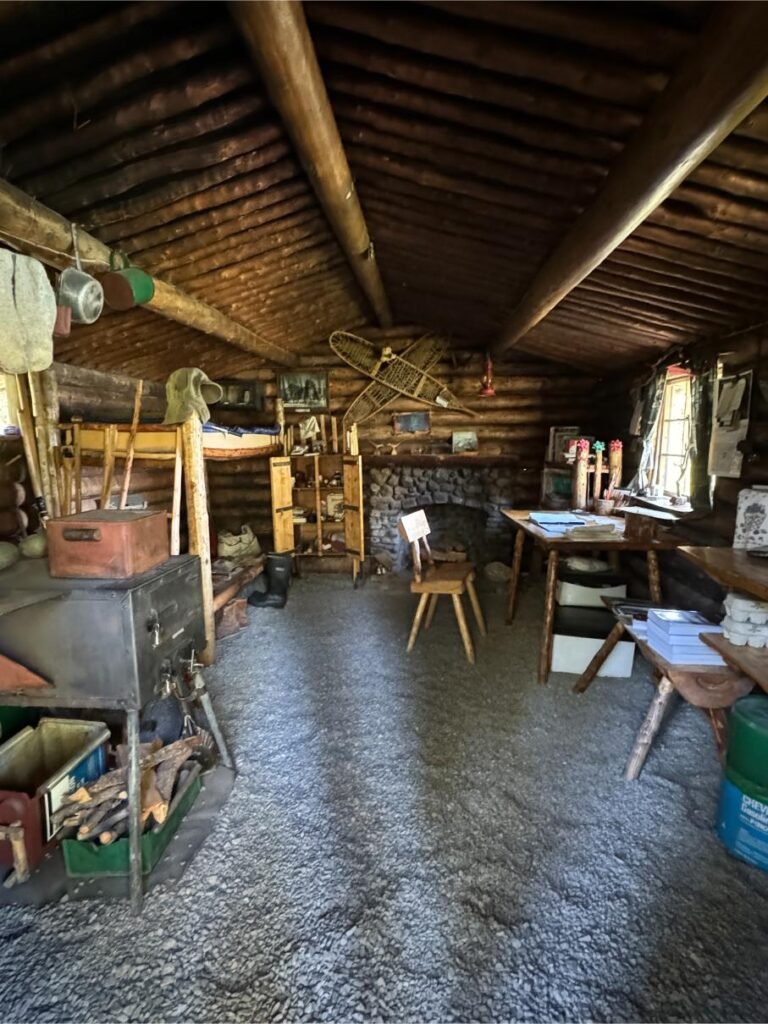
Inside Proenneke’s cabin. Photo by Debbie Stone
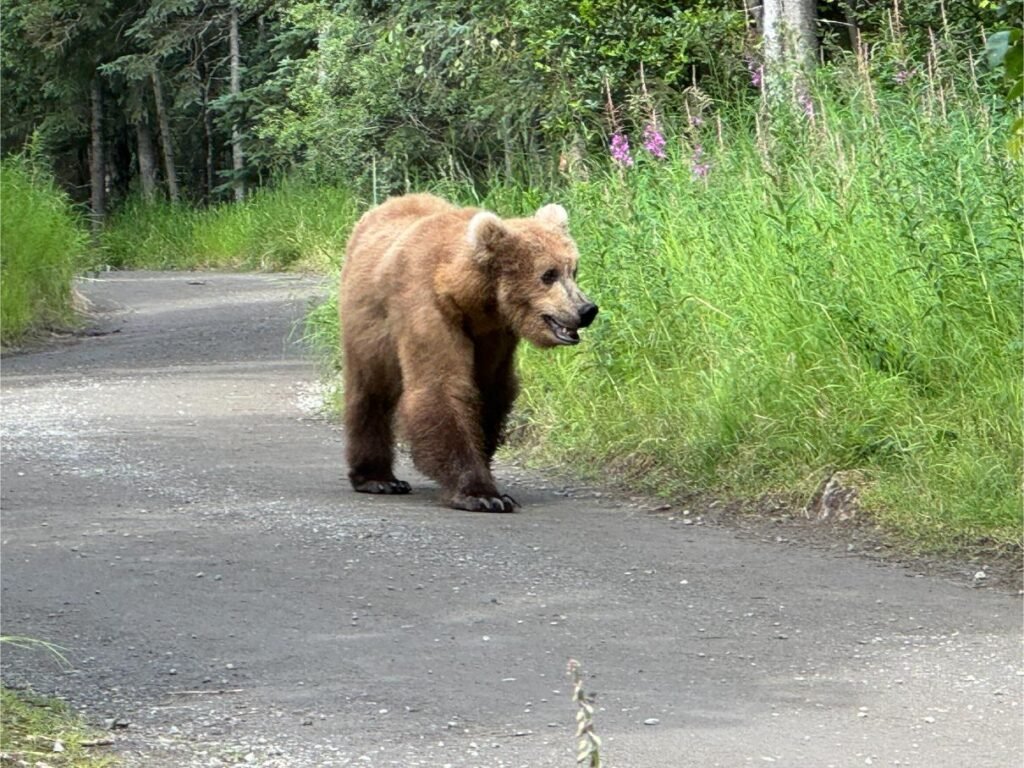
At Katmai NP, the bears are the highlight. Photo by Debbie Stone
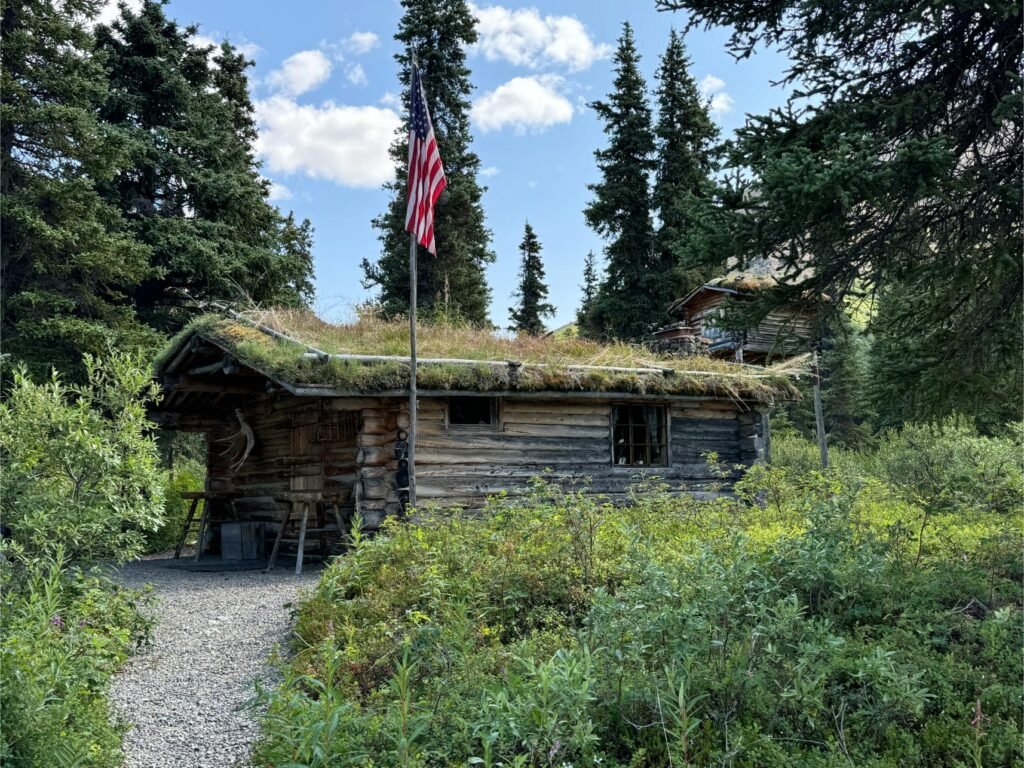
Another view of Proenneke’s cabin. Photo by Debbie Stone

Lake Clark Lodge chef with his freshly baked rolls. Photo by Debbie Stone
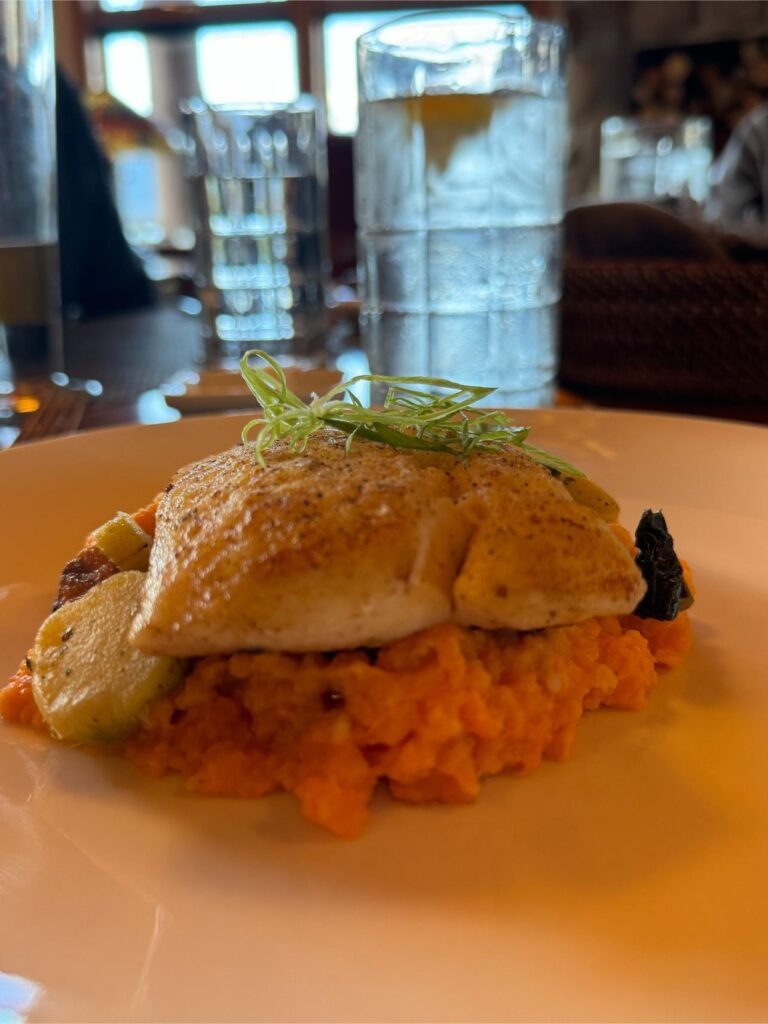
The food is tasty, fresh and filling at Lake Clark Lodge. Photo by Debbie Stone
The idea is for visitors to enjoy the Great Outdoors during the day and return to this luxe property at night. With a host of amenities, comfy guest rooms, a sophisticated, gourmet, culinary program and a hospitable, service-oriented staff that aims to please, you might not want to ever leave this heavenly haven.
The property is in the style of a classic North American lodge with a great room and fireplace and large windows to take in the views. Plus, an ample deck invites guests to step outside and gaze on the mesmerizing lake and mountain setting. In addition to the great room, there’s a number of common areas to unwind in, such as the game room, library and bar.
One day, we hopped on a float plane and headed to Katmai NP to see the bears. As it was mid-summer, these handsome creatures were in full glory, feasting at the salmon buffet. We spent several hours observing them and their unique fishing techniques. Then, before returning to the lodge, we took a quick flightseeing trip to the Valley of Ten Thousand Smokes, an area in Katmai where a most significant volcanic eruption occurred back in the early 1900s. This isolated landscape remains stark, forbidding and eerie, with no life. It felt like being in an apocalyptic sci-fi film, but this was no movie set.
Another day, we took a boat ride to Port Alsworth to see the Lake Clark National Park Visitor Center and its exhibits, followed by a hike to Tanalian Falls. This four-mile trail meanders through birch groves and spruce-studded hillsides, with glimpses of crystalline Lake Clark. Then you hear a deafening roar and the falls appear. The cold glacial waters thunder and crash from a 30-foot cliff of ancient lava, presenting an awesome scene. And to complete the picture, a rainbow appeared, as if on cue.
A trip to Richard L. Proenneke Historic Site was on our agenda for the next day. Not knowing anything about Proenneke, I was curious to learn what he did that motivated the NPS to protect and interpret this site.
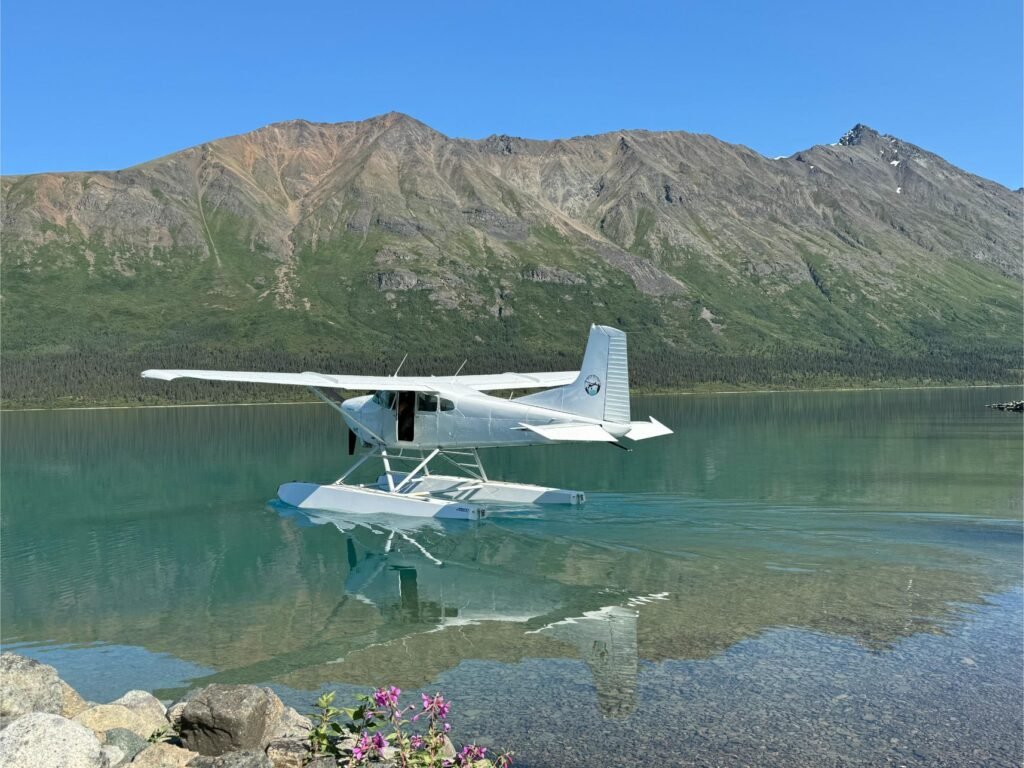
Landing on Upper Twin Lake. Photo by Debbie Stone
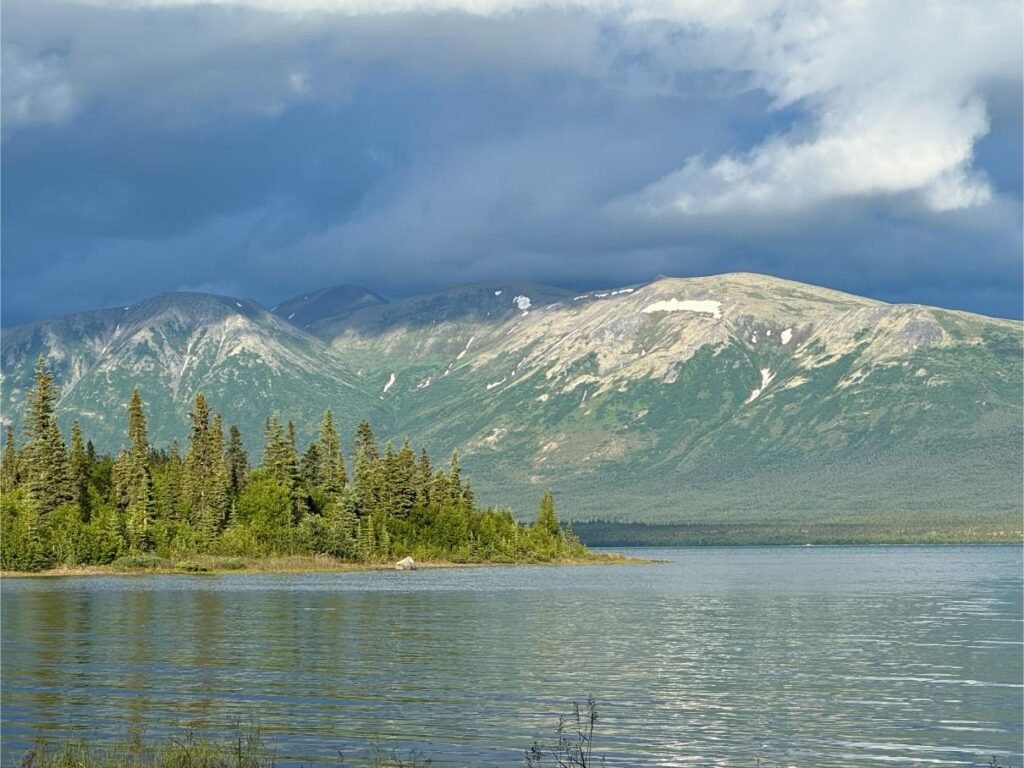
Lake Clark NP landscape is sublime. Photo by Debbie Stone
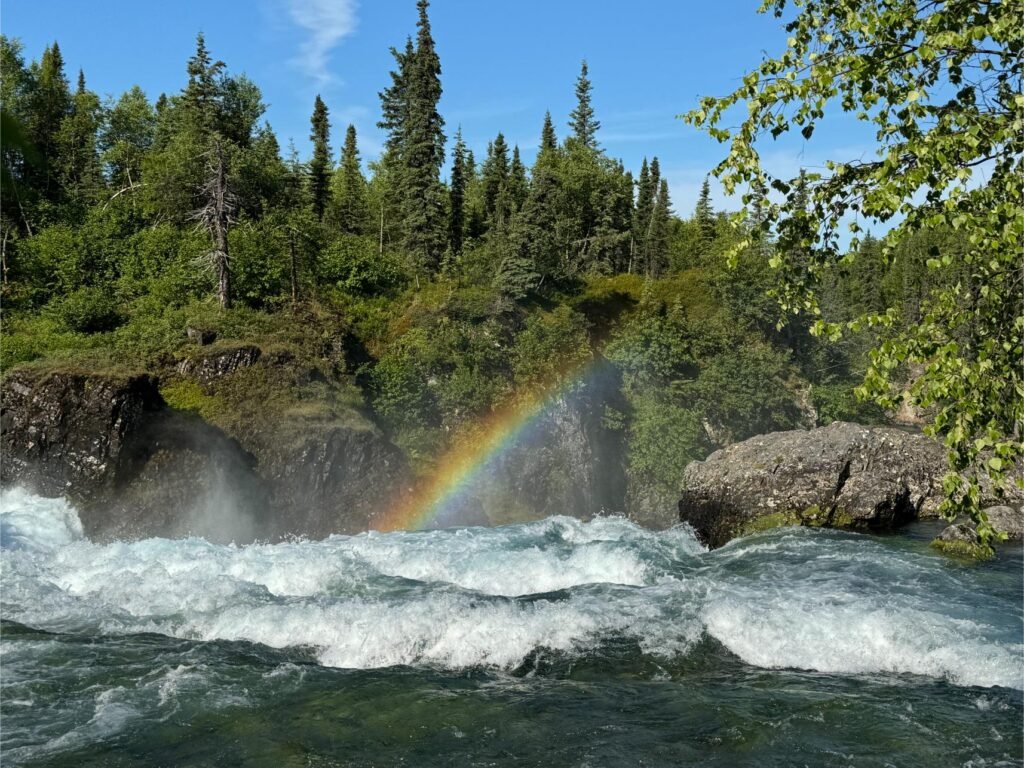
Tanalian Falls. Photo by Debbie Stone
Once again, we boarded a float plane to reach our destination. The flight itself was memorable, especially the commanding view of Twin Lakes, a pair of vibrant blue bodies of water – six-mile-long Upper Lake and four-mile-long Lower Lake – joined by a connecting stream. This complex of lakes was the retirement home of naturalist Richard “Dick” Proenneke, who spent most of the last three decades of his life (1968-1998) living here in a log cabin he built by hand.
We landed with a kiss on Upper Lake and proceeded to walk up to Proenneke’s cabin. A park ranger met us and began to show us around, while sharing the history of the site.
Proenneke served in the Navy during WWII and moved to Alaska in 1950, where he worked as a mechanic for the Alaska Fish & Wildlife Service. After spending a few years vacationing with friends (Spike and Hope Carrithers), who had built a cabin on the shores of Upper Twin Lake, Proenneke decided to put down roots in the area.
He began construction of his own place in the summer of 1967 and applied for a Small Track Lease that October. His application, though, was refused because earlier, the Secretary of the Interior “froze public land to entry,” meaning Homesteads and Small Track Leases couldn’t not be issued until Native Land Claims were settled.
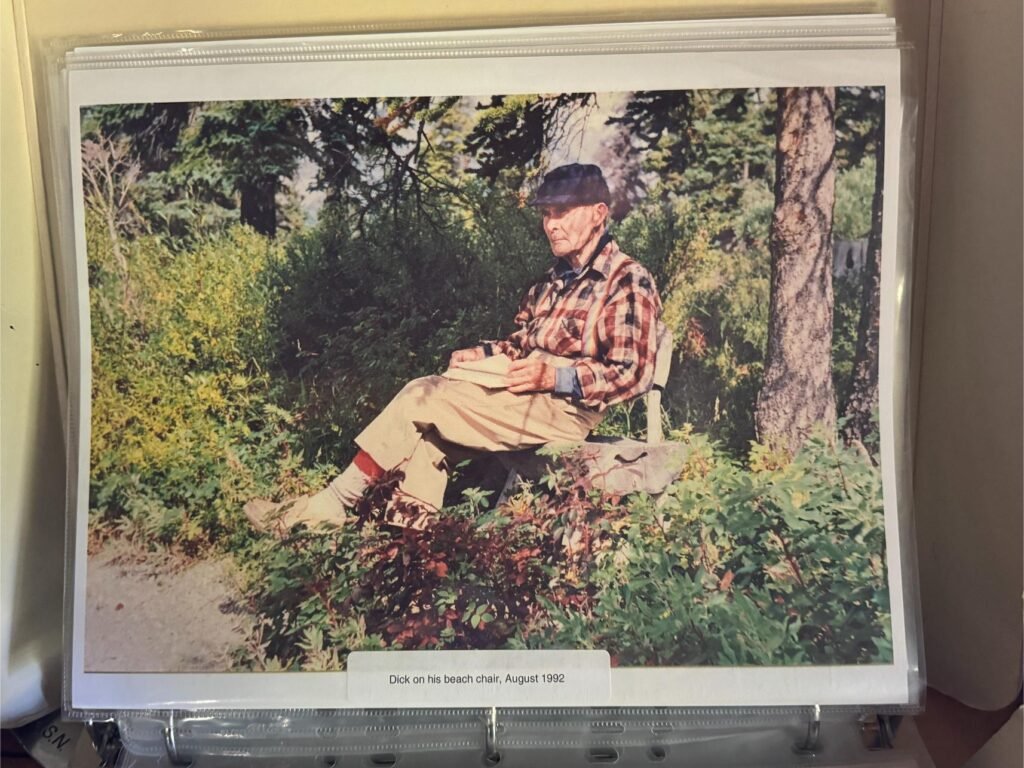
Picture of Proenneke. Photo by Debbie Stone
The following summer, Proenneke completed his log cabin, woodshed-outhouse and cache (to keep his food storage out of animals’ reach). In building his place, he used local materials and simple, handmade tools. By the time it was finished, the cabin had windows, a Dutch door, fireplace and a moss-covered roof, making it waterproof.
Proenneke dedicated himself to living simply on the land and sought to know the wilderness around him, as well as to conserve it. Every niche and corner of the Twin Lakes area was special to him and he extensively explored it. He was a tireless hiker in all seasons and all weather, believing that hiking kept him young.

Proenneke’s cabin. Photo by Debbie Stone
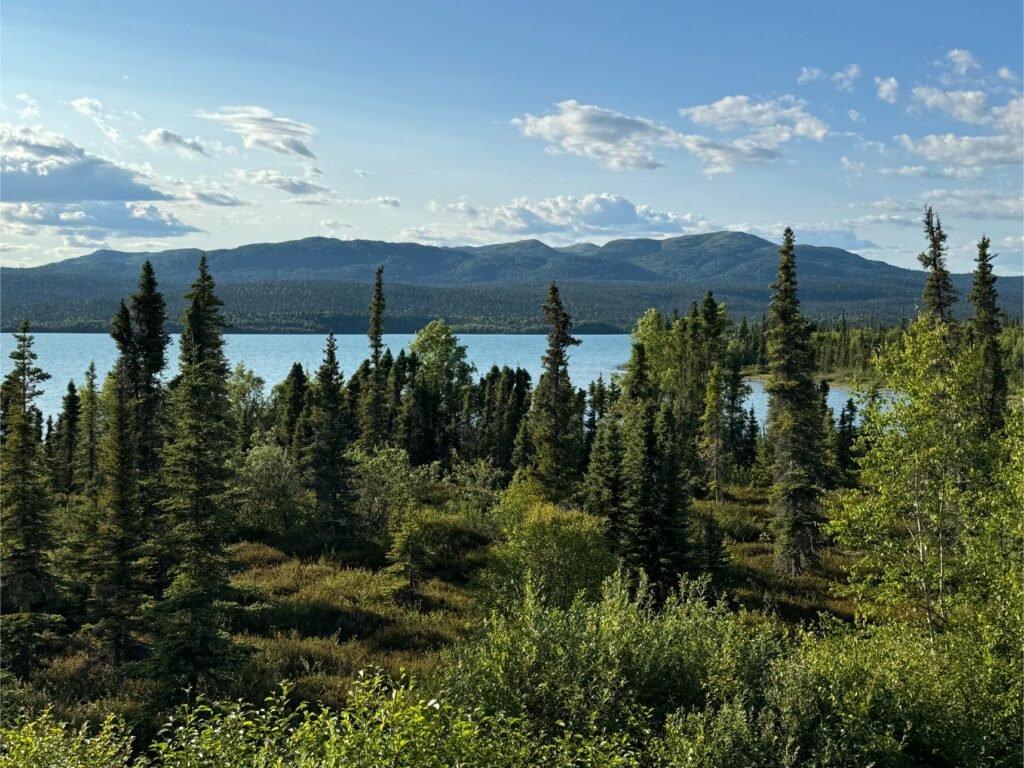
View from the lodge. Photo by Debbie Stone

The landscape as seen flying from Anchorage to Lake Clark Lodge. Photo by Debbie Stone
Over the years, Proenneke recorded his observations of the weather, wildlife, wilderness and even other human visitors in journals, film and video. His journals were published in 1973 as “One Man’s Wilderness: An Alaskan Odyssey” and PBS made a special about him, entitled “Alone in the Wilderness.” He became a wilderness icon, embodying the characteristics of self-reliance, perseverance, ingenuity and an independent spirit.
Though he never got title to the land upon which his cabin stood, Proenneke continued to live there after the NPS obtained management of the area in 1978. The NPS allowed him to stay there, as his nature and wildlife stewardship ethics had become an inspiration to people worldwide and exemplified the Park Service’s mission.
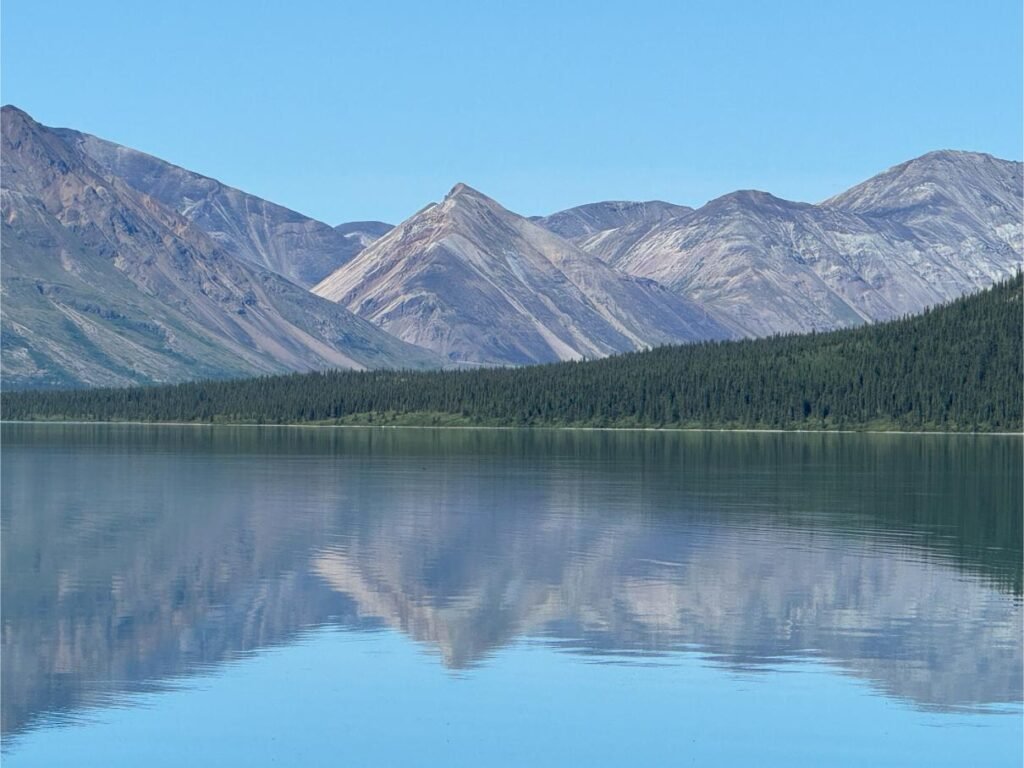
Stellar view of Upper Twin Lake from Proenneke site. Photo by Debbie Stone
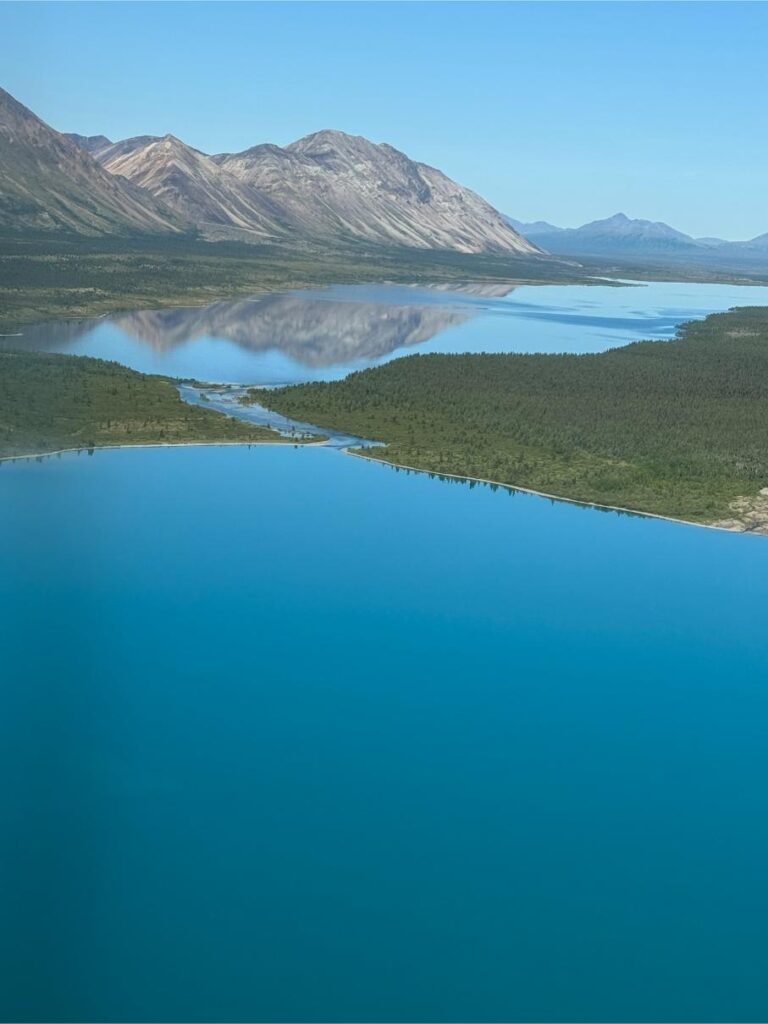
Twin Lakes. Photo by Debbie Stone
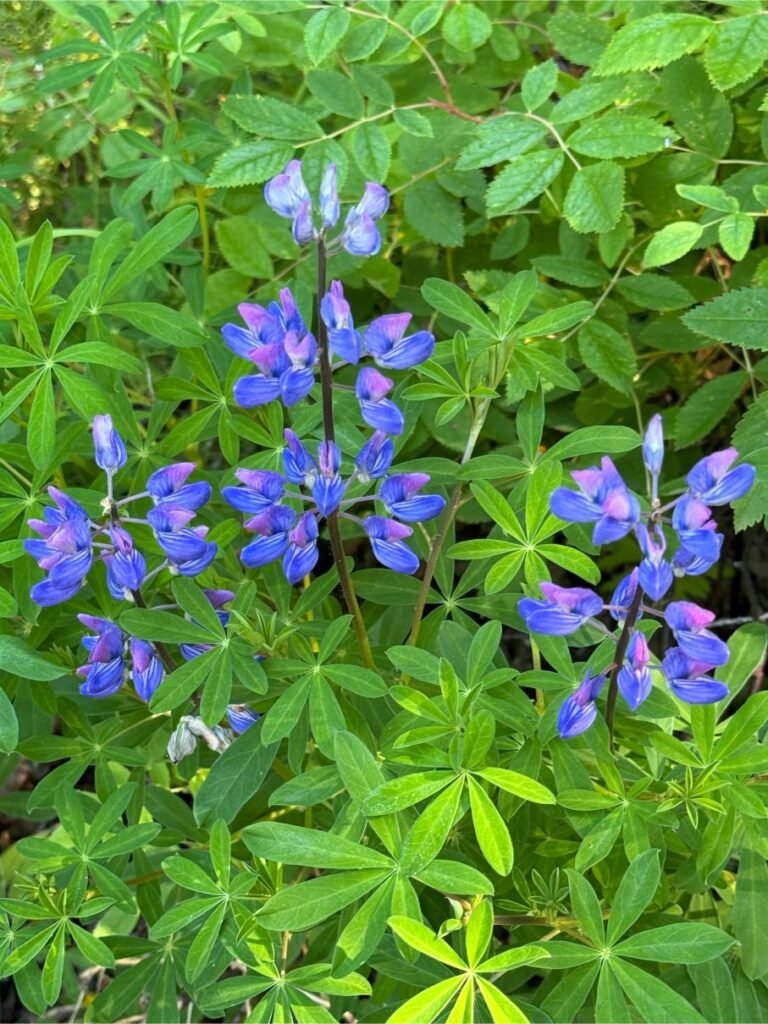
Wildflowers in bloom. Photo by Debbie Stone
Upon his death in 2003, Proenneke left the cabin and many of his handcrafted belongings to the care of the park. Four years later, the cabin and outbuildings were listed on the National Register of Historic Places “in recognition of their stature as an excellent and well-known example of an Alaskan bush log cabin, and for Proenneke’s voice in the preservation of wilderness in Alaska.” Today, the NPS maintains the cabin and welcomes visitors to tour it.
Inside the humble abode, everything has been carefully preserved. You can sit at Proenneke’s writing desk, get a pic of yourself in the famous Dutch Door of the cabin, check out the outhouse, hike to Teetering Rock for a killer view of Upper Twin Lake and walk down the beach to Hope Creek.
Though it’s tempting to romanticize living a lifestyle akin to Proenneke’s, the Alaskan bush can be a harsh environment, with many challenges. It takes a certain kind of person to not only survive in this wilderness, but to fully embrace it with the utmost passion and devotion. That was certainly the case for Dick Proenneke.
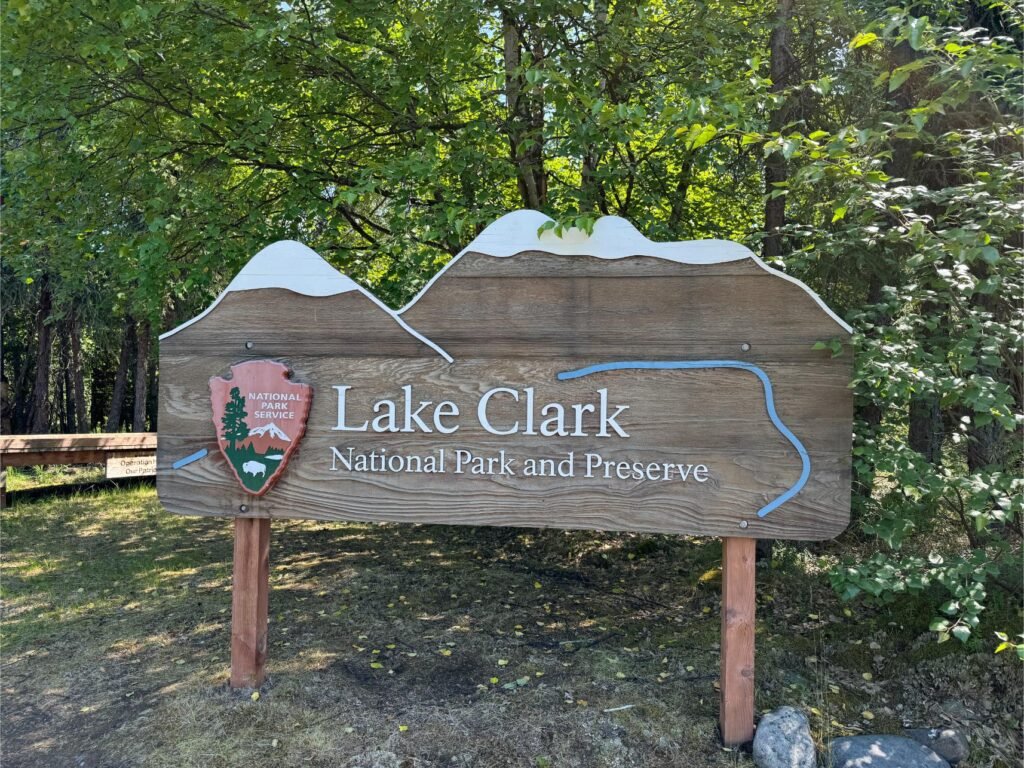
Lake Clark NP sign. Photo by Debbie Stone
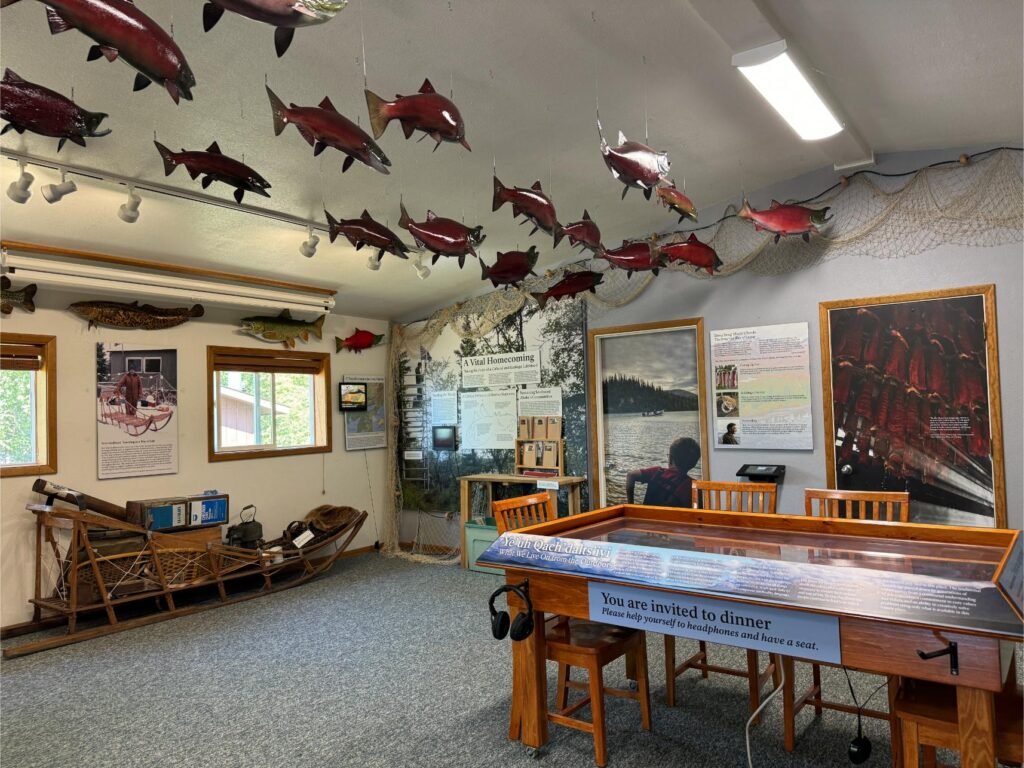
Inside Lake Clark NP Visitor Center. Photo by Debbie Stone

